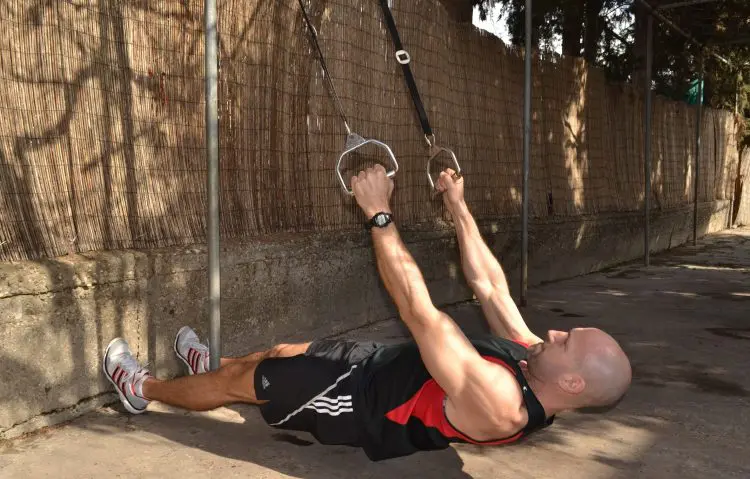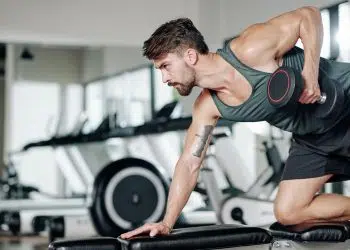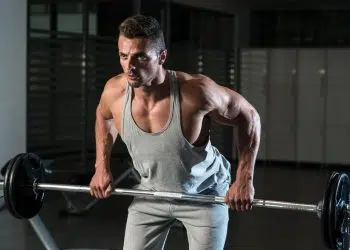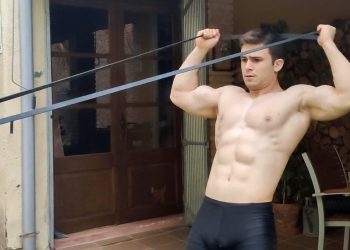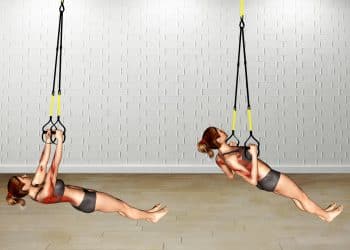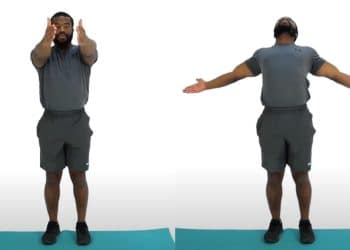The human body consists of over 600 muscles. However, as bodybuilders, we focus on at most 20, including the biceps, triceps, pecs, lats, quads, and delts.
This makes sense because the muscles we train tend to be the biggest and most prominent. However, small muscles matter, too, even those that are not as visible. While these muscles won’t directly impact your physique aesthetics, they’re still important for lowering your risk of injury and enhancing performance to get better results from your workouts.
Drawing from my 35 years of experience as a personal trainer, I can confidently say that focusing on often-overlooked muscles like the teres major and teres minor can significantly enhance your functionality, athletic performance, and physique aesthetics.
In this article, I’ll explain what these muscles do and how best to train them. The good news is that you are probably already doing plenty of teres major and teres minor exercises, as they get a workout whenever you train your back.
Recent Updates: On June 22, 2024, Fitness Volt’s Senior Editor Vidur Saini (American Council on Exercise-CPT) updated the article and added actionable expert tips throughout the piece to improve the reader experience. Level Up Your Fitness: Join our 💪 strong community in Fitness Volt Newsletter. Get daily inspiration, expert-backed workouts, nutrition tips, the latest in strength sports, and the support you need to reach your goals. Subscribe for free!
13 Teres Major & Teres Minor Exercises:
Add the following exercises to your arsenal:
- Straight Arm Pulldown
- Inverted Row
- Lat Pulldown
- Pull-Up And Chin-Up
- Single-Arm Dumbbell Row And Kroc Row
- Dumbbell Reverse Fly
- Band Pull-Apart
- Seated Cable Row
- Bent Over Rows
- T-Bar Row
- Pendlay Row
- Yates Row
- Face Pulls
1. Straight Arm Pulldown
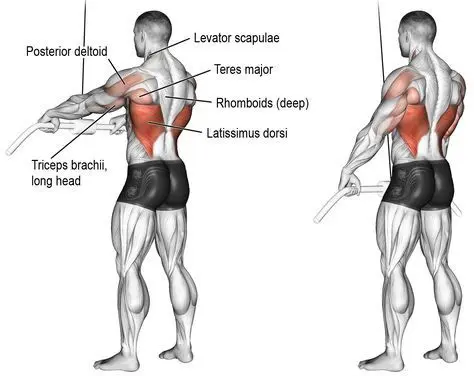
| Sets & Reps | Equipment Needed | Target Muscles |
| 3 x 10-15 | Cable Machine | Latissimus Dorsi, Triceps, Teres Major & Minor |
Most upper back exercises are compound in nature. That means they involve your biceps as well as your lats. This one’s a little different, as it’s one of just a few lat isolation exercises. As well as training your lats, straight arm pulldowns provide your teres major and minor with a good workout.
“This exercise is often overlooked, but it’s a fantastic way to isolate the upper back muscles, including the teres major and minor, and build a strong mind-muscle connection, says Saini.
Pro Tip: Maintain a slight elbow flexion throughout the movement to prevent hyperextension and keep tension on the lats.
| Difficulty | Progression | Regression |
| Beginner | Pause in the fully lengthened position | Dumbbell pullover |
Learn how to do straight arm pulldowns in our detailed guide.
2. Inverted Row
| Sets & Reps | Equipment Needed | Target Muscles |
| 3 x 8-12 | Smith Machine or Suspension Trainer | Latissimus Dorsi, Rhomboids, Biceps, Teres Major & Minor |
No gym? No problem! You can also train the teres major and minor with bodyweight exercises. Inverted rows, also known as Australian pull-ups, are a great home and garage gym exercise you can do using a barbell in a low squat rack, a strong broomstick between two chairs, or a suspension trainer. Make this exercise harder or easier by raising or lowering your feet.
Saini adds that inverted rows are a scalable exercise that can be modified to suit any fitness level. They are a great way to build pulling strength and improve posture.
Pro Tip: To increase lat engagement, actively try to bend the bar during the pull. This will create a stronger mind-muscle connection.
| Difficulty | Progression | Regression |
| Beginner | Elevate feet, use a weighted vest | Increase the angle of the body |
Find out more about this useful exercise here.
3. Lat Pulldown
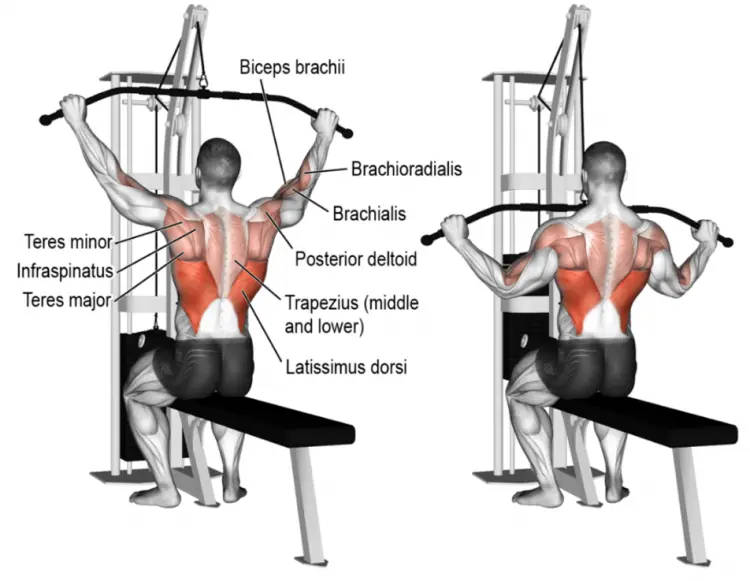
| Sets & Reps | Equipment Needed | Target Muscles |
| 3 x 8-12 | Cable Machine | Latissimus Dorsi, Biceps Brachii, Teres Major & Minor, Rhomboids |
As you’d expect for muscles that are sometimes known as your mini-lats, teres major and minor play a big part in lat pulldowns. It doesn’t matter which lat pulldown variation you do; they’re all good for developing the teres major and minor.
Saini recommends using a controlled tempo and avoiding excessive momentum to maximize target muscle engagement.
Your choices include:
- Wide overhand grip
- Narrow underhand grip
- Narrow neutral grip
- Medium parallel grip
- Lever pulldown
- One-arm lat pulldown
Pro Tip: Instead of pulling straight down, visualize pulling your elbows towards your hips for greater teres major and minor activation.
| Difficulty | Progression | Regression |
| Beginner | Add a pause at the bottom | Straight-arm lat pulldown |
4. Pull-up and Chin-up
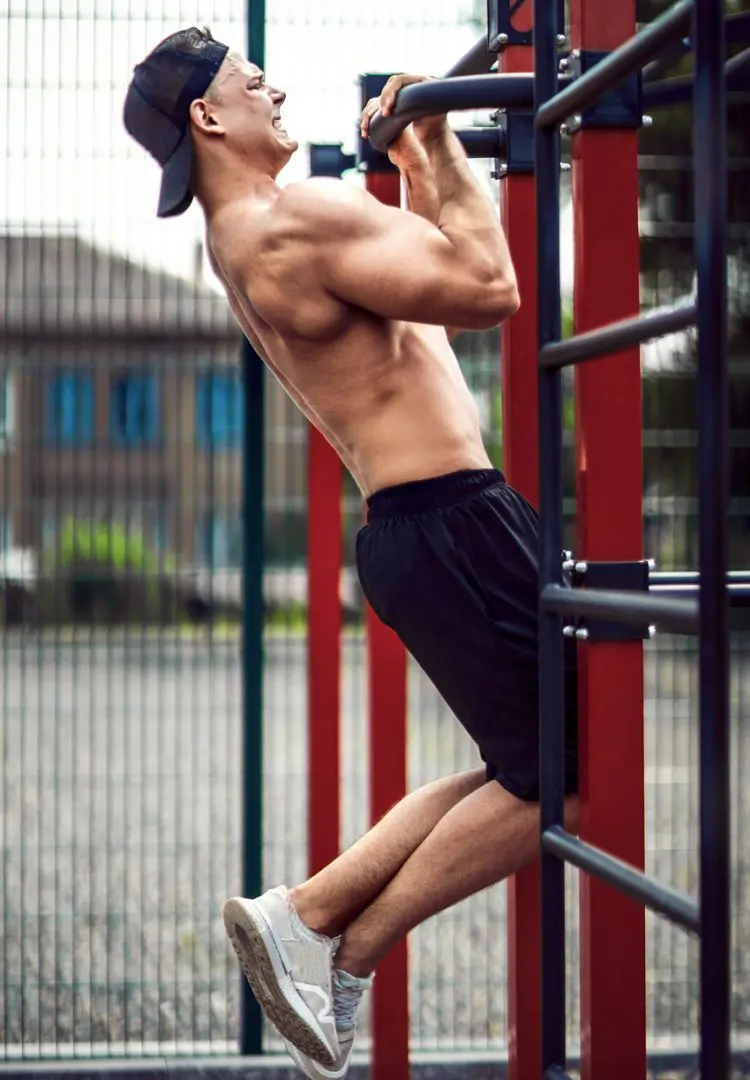
| Sets & Reps | Equipment Needed | Target Muscles |
| 3 x Max | Pull-up Bar | Latissimus Dorsi, Biceps Brachii, Teres Major & Minor, Rhomboids |
Like pulldowns, pull-ups and chin-ups also provide your teres major and teres minor with a great workout, albeit one that’s considerably more intense. Pull-ups are done using an overhand grip, while chin-ups are done with an underhand grip.
Both variations are effective, so try each one to see which one you prefer. Most people find chin-ups slightly easier simply because the biceps are in a more biomechanically efficient position.
Per Saini, pull-ups and chin-ups are the gold standard for upper body strength. Mastering these exercises unlocks a new level of strength and confidence.
Pro Tip: At the top of each rep, engage your core and try to pull your chest towards the bar. This will maximize lat contraction and build overall pulling power.
| Difficulty | Progression | Regression |
| Advanced | Weighted pull-ups or chin-ups, muscle-ups | Use a resistance band for assistance or do negatives |
Read all about pull-ups and chin-ups in this guide.
5. Single-arm Dumbbell Row and Kroc Row

| Sets & Reps | Equipment Needed | Target Muscles |
| 3 x 8-12 | Dumbbell | Latissimus Dorsi, Biceps Brachii, Teres Major & Minor, Rhomboids |
Single-arm rows allow you to train one side of your body at a time, which is an excellent way to ensure both sides are developed equally. They work your lats, biceps, middle traps, rhomboids, and, of course, those all-important teres major and minor muscles
You can do single-arm dumbbell rows with moderate weights and strict form or go heavier and looser with Kroc rows.
Saini says that the single-arm dumbbell row allows for a greater range of motion and can help correct muscle imbalances. On the flip side, Kroc rows are a brutal variation that challenges grip strength and builds serious back thickness.
Pro Tip: Initiate each rep by pulling your shoulder blade back and down, then driving your elbow towards the ceiling. This sequencing will ensure proper muscle engagement and minimize stress on the shoulder joint.
| Difficulty | Progression | Regression |
| Intermediate | Renegade rows with push-up | Seated cable rows |
6. Dumbbell Reverse Fly

| Sets & Reps | Equipment Needed | Target Muscles |
| 3 x 10-15 | Dumbbells | Posterior Deltoids, Rhomboids, Teres Major & Minor |
So far, all of our teres major and teres minor exercises have also involved the lats. You’ll undoubtedly be glad to hear that there are other exercises you can use that don’t mean more lat training. Dumbbell reverse flyes are a posterior deltoid exercise that also gives your teres major and minor a good workout.
You can do this exercise face-down on an inclined bench, standing and leaning over, or sitting on the edge of a bench with your chest on your legs. It can also be done using a cable machine, like a reverse cable crossover.
“The reverse fly is a great way to strengthen the rear delts and improve shoulder stability, which can be beneficial for preventing injuries and improving posture,” Saini says.
Pro Tip: Maintain a slight external shoulder rotation throughout the movement to help target the teres muscle more effectively and prevent internal rotation impingement.
| Difficulty | Progression | Regression |
| Beginner | Cable reverse flyes | Pec deck reverse flyes |
Check out our guide to dumbbell reverse flyes here.
7. Band Pull-Apart

| Sets & Reps | Equipment Needed | Target Muscles |
| 3 x 15-25 | Resistance Band | Posterior Deltoids, Rhomboids, Teres Major & Minor |
Band pull-aparts are one of the best exercises you can do for your posture and shoulder health. They’re the perfect antidote for all those push-ups and bench presses you do! Because all you need to do this exercise is a resistance band, they’re all but excuse-free, and almost every lifter should do this exercise regularly and consistently. Oh, and by the way, it’s also a very effective teres major and minor exercise!
Saini explains that the band pull-apart is a simple yet effective exercise you can do anywhere. It’s great for activating the back muscles and improving posture throughout the day.
Level Up Your Fitness: Join our 💪 strong community in Fitness Volt Newsletter. Get daily inspiration, expert-backed workouts, nutrition tips, the latest in strength sports, and the support you need to reach your goals. Subscribe for free! Pro Tip: Pause and contract your rear delt briefly in the fully shortened position to maximize target muscle stimulation.
| Difficulty | Progression | Regression |
| Beginner | Use a thicker band, do face pulls | Use a lighter band, fewer reps |
Learn all about band pull-aparts here.
8. Seated Cable Row

| Sets & Reps | Equipment Needed | Target Muscles |
| 3 x 8-12 | Cable Machine | Latissimus Dorsi, Biceps Brachii, Teres Major & Minor, Rhomboids |
Seated cable rows are another lat exercise that’ll hammer the teres major and minor muscles into shape. The main advantage of this exercise over things like bent-over rows is that there is less stress on the lower back.
Also, because it’s a machine exercise, it is easier to do drop sets and myo-reps to crank up the training intensity.
Saini suggests emphasizing a deep stretch at the bottom of your range of motion (ROM) to maximize hypertrophy.
Pro Tip: Vary your grip width and hand position (overhand, underhand, neutral) to target different areas of the back and create a more well-rounded development.
| Difficulty | Progression | Regression |
| Beginner | Bent-over barbell rows | Banded rows |
Read more about seated cable rows here.
9. Bent Over Rows
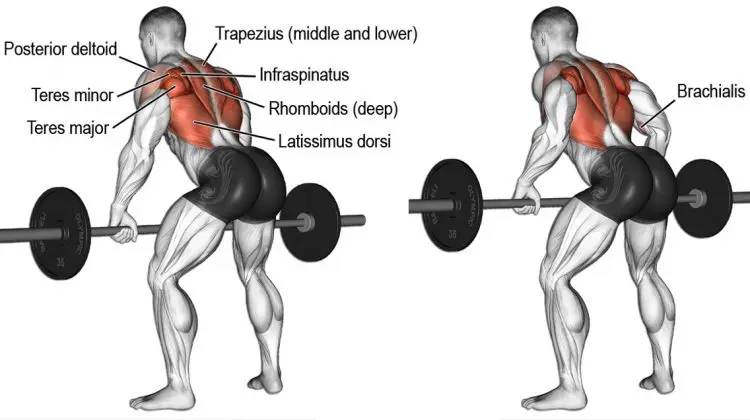
| Sets & Reps | Equipment Needed | Target Muscles |
| 3 x 8-12 | Barbell | Latissimus Dorsi, Biceps Brachii, Teres Major & Minor, Rhomboids |
Bent-over rows are one of the best back-builders around, and that includes your teres major and minor. On the downside, they can be a little hard on your lumbar spine, especially if you allow your lower back to round. Take care not to go too heavy too soon with this exercise, or you could find the risks outweigh any potential benefits.
Focus on squeezing your shoulder blades together at the top of each rep for maximum teres major and minor activation, Saini advises.
Pro Tip: Instead of just pulling with your arms, focus on rowing the weight with your back muscles to ensure the target muscles do most of the work.
| Difficulty | Progression | Regression |
| Intermediate | Pendlay rows | Cable rows |
Learn how to do bent-over rows the right way here.
10. T-bar Row

| Sets & Reps | Equipment Needed | Target Muscles |
| 3 x 8-12 | T-bar Machine | Latissimus Dorsi, Biceps Brachii, Teres Major & Minor, Rhomboids |
T-bar rows are a popular lat exercise that also works your biceps, mid-traps, rhomboids, and teres major and minor. Compared to bent-over rows, there is a little less stress on your lower back, making it easier to avoid rounding your lumbar spine. That doesn’t mean T-bar rows are 100% safe, but they’re a good option if barbell bent-over rows bother your back.
“Prioritize a full ROM and pause in the fully extended position to load the upper back muscles,” cues Saini.
Pro Tip: Maintain a neutral spine throughout the movement to prevent lower back strain and ensure proper loading on the back muscles.
| Difficulty | Progression | Regression |
| Intermediate | Pendlay rows | Cable rows |
Learn all about T-bar rows in our detailed guide.
11. Pendlay Row
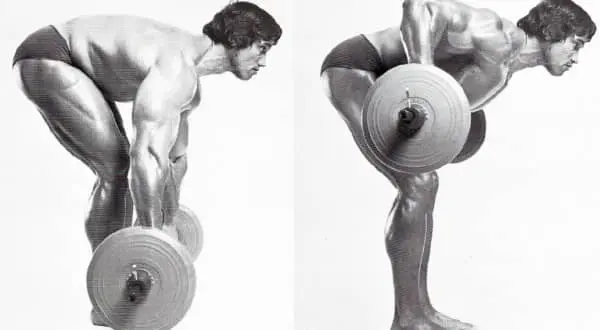
| Sets & Reps | Equipment Needed | Target Muscles |
| 3 x 6-8 | Barbell | Latissimus Dorsi, Biceps Brachii, Teres Major & Minor, Rhomboids |
Also known as the dead-stop row, Pendlay rows are named after weightlifting and powerlifting coach Glen Pendlay. This exercise involves doing bent-over rows while pausing with the weight on the floor between reps. This takes the pressure off your lower back and gives your grip a brief rest. It’s a great exercise for heavy weights and low reps and will provide your lats, teres major, and teres minor with a great workout.
The Pendlay row is a challenging exercise that requires explosiveness and power. It’s a great way to develop pulling strength and athleticism, says Saini.
Pro Tip: Be as explosive as possible off the ground and as slow as possible on the lowering phase.
| Difficulty | Progression | Regression |
| Advanced | Slow eccentrics | Barbell bent-over row |
Find out how to do Pendlay rows in this article.
12. Yates Row

| Sets & Reps | Equipment Needed | Target Muscles |
| 3 x 8-12 | Barbell | Latissimus Dorsi, Biceps Brachii, Teres Major & Minor, Rhomboids |
Named after six-time Mr. Olympia winner Dorian “The Shadow” Yates, like all rowing exercises, the Yates row involves all of your major upper back muscles, including the teres major and teres minor.
Per Saini, if you have been doing the conventional bent-over rows for a long time, the Yates row can be a welcome change into your routine.
Pro Tip: Keep your elbows close to your body and pull the bar towards your lower abdomen. This will maximize teres major and minor activation and minimize bicep involvement.
| Difficulty | Progression | Regression |
| Intermediate | Pendlay row | Cable rows |
Learn how to do the Yates row here.
13. Face Pulls
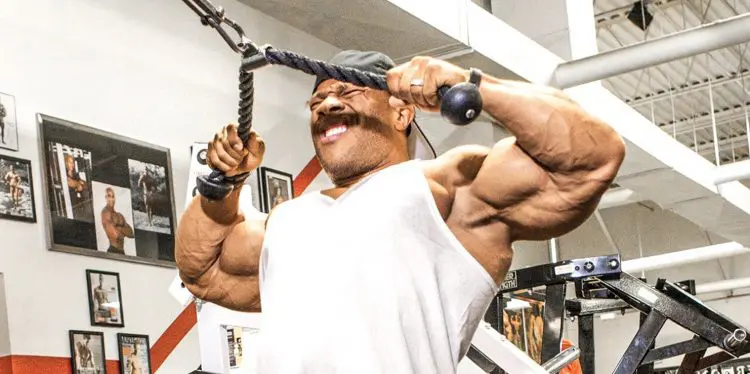
| Sets & Reps | Equipment Needed | Target Muscles |
| 3 x 10-15 | Cable Machine | Posterior Deltoids, Rhomboids, Teres Major & Minor |
Postural exercises don’t come much better than cable face pulls. Face pulls effectively engage the teres major and minor muscles while simultaneously working the muscles across and between your shoulder blades and your posterior deltoids.
Get the most from this exercise by using a light to moderate weight, keeping your upper arms parallel to the floor, and really pulling your shoulders back and together during the lifting phase.
Face pulls are a must-do exercise for healthy shoulders, explains Saini. They strengthen the rear delts and external rotators, which can help prevent imbalances and injuries.
Pro Tip: Focus on pulling the rope apart and externally rotating your shoulders at the end of each rep. This will target the teres major and minor muscles and external rotators more effectively.
| Difficulty | Progression | Regression |
| Beginner | Cable rows | Banded face pulls |
Get even more from this exercise with our in-depth guide.
Best Teres Major and Minor Workout
Bring up your teres muscles with this workout:
| Exercise | Sets | Reps | Rest (seconds) |
| Lat Pulldown | 3 | 8-12 | 60-90 |
| Inverted Row | 3 | 8-12 | 60-90 |
| Single-Arm Dumbbell Row | 3 | 8-12/arm | 60-90 |
| Band Pull-Apart | 3 | 15-25 | 30-60 |
| Face Pulls | 3 | 10-15 | 30-60 |
Teres Major and Teres Minor Anatomy

Before we reveal the best teres major and teres minor exercises, let’s take a quick look at what these small but essential muscles actually do.
Teres Major
Teres major is a thick muscle that runs from the lateral edge of your scapula or shoulder blade to your humerus or upper arm bone. It works with your lats and is responsible for the following joint actions:
- Shoulder adduction
- Shoulder extension
- Shoulder medial rotation
- Stabilization of the shoulder joint
Teres Minor
Teres minor is one of the muscles that make up the rotator cuff. The other muscles in the rotator cuff are supraspinatus, infraspinatus, and subscapularis. Teres minor is located above the teres major and is a little thinner. It runs from the lateral border of the scapula to the upper humerus.
The functions of the teres major are:
- Shoulder adduction
- Shoulder external rotation
- Stabilization of the shoulder joint
Training teres major and teres minor will enhance shoulder joint stability, which could improve your performance of all major upper body exercises while reducing your risk of shoulder pain. They also contribute to the shape of your upper back, which is why some bodybuilders refer to the teres major and teres minor as your “mini lats.”
Wrapping Up
It’s all but impossible to isolate your teres major and teres minor. They work alongside your lats and are involved in almost every back and posterior deltoid exercise. In fact, most people only become aware of these muscles when they are tight or develop trigger points and become painful.
That said, it’s often interesting to learn more about the 600+ muscles that make up your body. And while it’s highly unlikely that anyone will ever compliment you on your teres major and teres minor development, at least you’ll know where your “mini-lats” are, what they do, and what exercises you can do to develop them.
Interested in measuring your progress? Check out our strength standards for Bench Press, Dumbbell Reverse Fly, Push Ups, and more.

